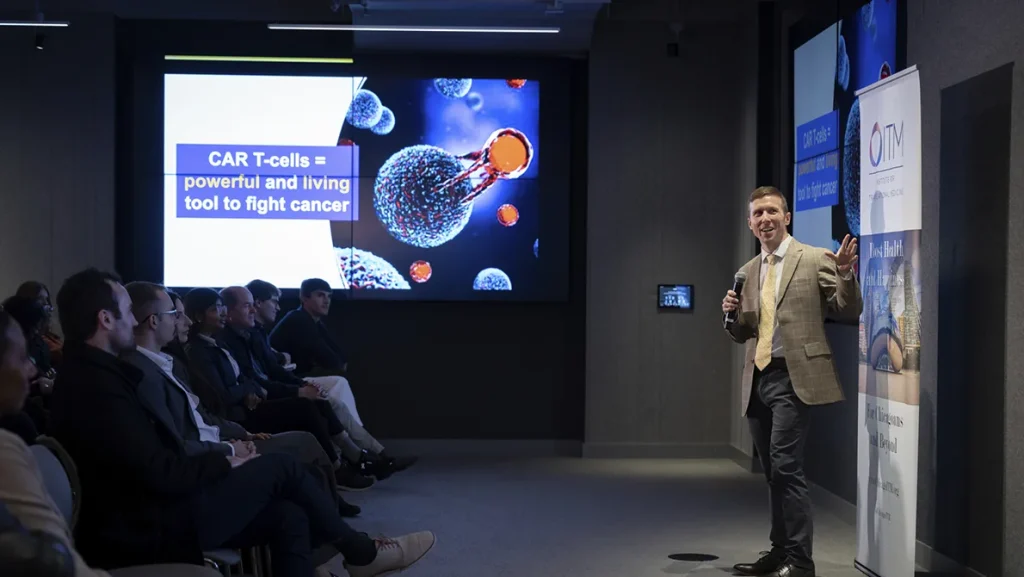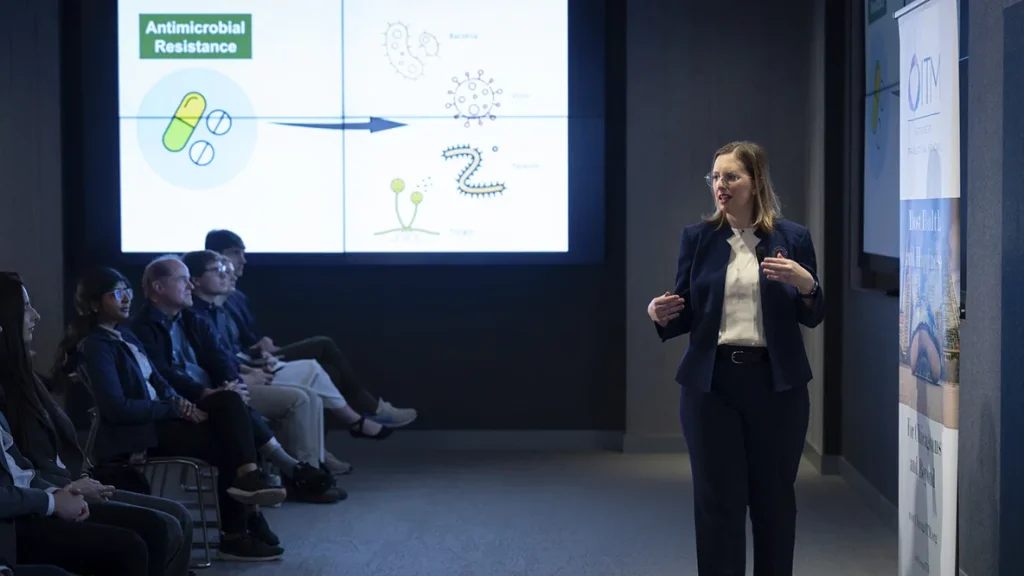Three researchers presented their ongoing projects at an annual event showcasing the science communications training they receive as part of their award package, which is fueled by the National Institute of Health’s Career Development (K12) Awards administered by the Institute for Translational Medicine (ITM) and Northwestern University Clinical and Translational Sciences Institute (NUCATS).
“Giving these talented physician researchers access to communication education and custom coaching, as well as an opportunity to connect with a live audience of the public whom they’re working to serve – this is rare among professional training programs,” said Eric Beyer, MD, PhD, ITM leader of the Career Development Core and Professor of Pediatrics at the University of Chicago. “It’s great to see scientists connect with the community and put their skills to use now and throughout the rest of their careers.”
Presentation topics ranged from the benefits and risks of cannabis use to preventing deadly side effects of cancer treatments to super germs living inside humans. The researchers competed for the best talk that the audience voted on at the end of their presentations.


“I didn’t expect to get emotional,” McNerney said. “But this is something that made me get really passionate about CAR-T cell therapy and made me pursue a career in research and what I do clinically.”
McNerney is currently studying to prevent the side effects. If you’re interested in children’s cancer research or preventing side effects, contact McNerney at kmcnerney@luriechildrens.org.

Gonzalez was joined by his wife, Brenda Moore, who is an engineer.

ITM Contact: Sara Serritella, Director of ITM Communications, serritella@uchicago.edu
This project is supported by the National Center for Advancing Translational Sciences (NCATS) of the National Institutes of Health (NIH) that supports the Institute for Translational Medicine (ITM) through Grant Number UL1TR002389.

